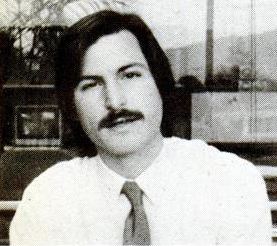Oy! Microsoft's trying to save a company whose stock has gone exactly nowhere for the past decade, revolutionize an aging product, halt Windows' slipping market share, spur corporate clients to immediate worldwide adoption, and bring an exciting new vision of Windows to the desktop, to the tablet, and to the phone -- and we're talking about dialog boxes? Clearly, Sinofsky's biding time, waiting to drop the big bombs at the
Build conference on Sept. 12. In the interim, we're getting pablum.
However, a few details struck me as odd while viewing the
Building Windows 8 video connected to the latest blog post. If you run the video and pause it in two places, roughly at 25 seconds and again at 35 seconds, you'll notice a couple of very different Windows desktops.
The first desktop, which shows a folder inside of the Pictures folder, looks like the kind of desktop we're expecting from the Windows 8 tiled interface. The icons at the bottom, from left to right, are the Windows Flag, Internet Explorer, Outlook, PowerPoint, Excel, Word and Windows Explorer. As Long Zheng explains in his
iStartedSomething blog, the Windows Flag icon looks a lot like the tile-based "touch" Start button we saw in the D9 Conference video. There's no taskbar, just icons sitting on the desktop.
The screen at 35 seconds is another story -- very much like a traditional Windows 7 screen, showing the Pictures library. There's a good, old-fashioned Windows toolbar; in the lower left sits the Win7 orb, followed by icons for Outlook, Internet Explorer, Windows Explorer, and the Command Prompt. The Windows Flag is nowhere to be seen. The toolbar icons are nothing like the icons on the first desktop.
As Zheng notes, the first screen includes a "Sync status" notification, leading him to conclude that syncing will be a much more prominent concept in Windows 8. But this second screen doesn't mention syncing at all.
The demo shows these new copy dialogs, but only on the Windows 7-like desktop. There's no discussion at all about the new desktop.
Is it possible that Windows 8 will contain a Windows 7 desktop emulator? Tantalizing thought.
A couple of miscellaneous observations: Both desktops seem to include an "Up one level" icon next to the Windows Explorer navigation buttons -- a major development, far more important than collision dialog boxes, in my opinion. And there's no ribbon, anywhere, on either desktop, in spite of repeated promises (threats?) to the contrary.
We should know a lot more in three weeks. In the meantime, it looks like we'll be treated to a lot of grandstanding about nearly inconsequential details. But if we're lucky, we'll get more sneak peeks of the man behind the curtain



